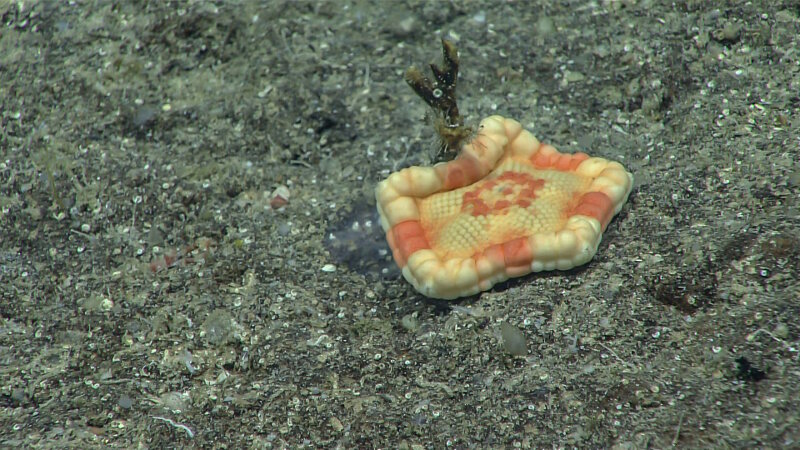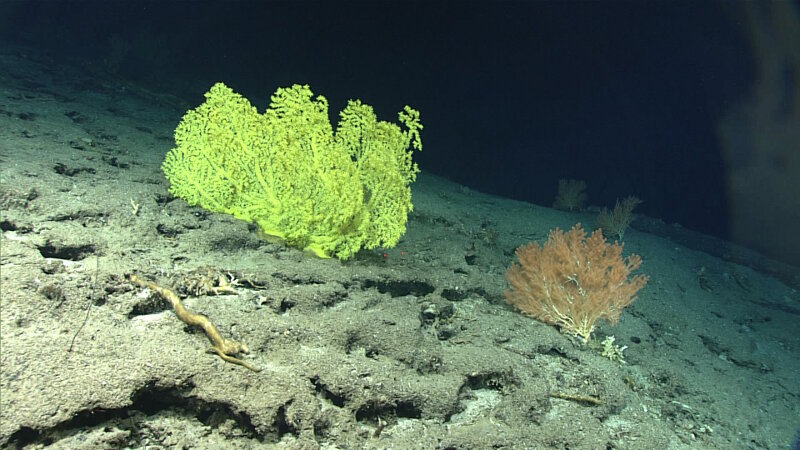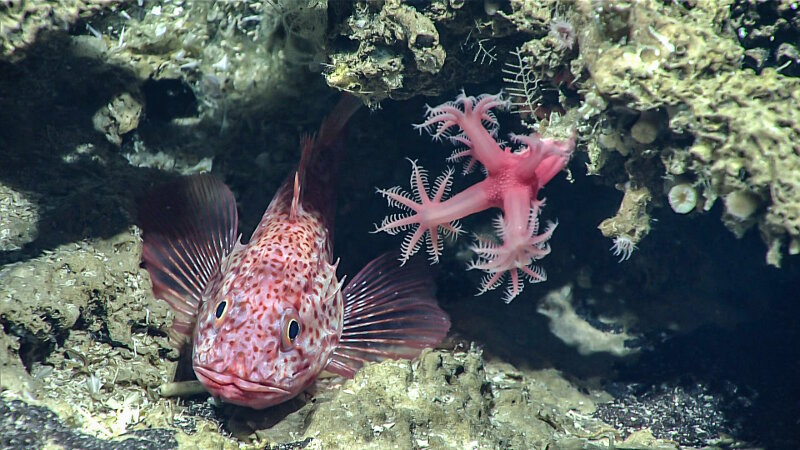-

This cookie star was identified as Sphaeriodiscus ammohiluis. It has distinctive alternating bands of darker and lighter orange. This animal was found at 363 meters (1,190 feet) depth. Image courtesy of the NOAA Office of Ocean Exploration and Research, Deep-Sea Symphony: Exploring the Musicians Seamounts. Download larger version (jpg, 2.0 MB).
-

These two colonies could be equated to a before and after shot of colonization by gold coral (left), Kulamanamana haumeaae, and likely host colony species, bamboo coral (right), Acanella sp. Image courtesy of the NOAA Office of Ocean Exploration and Research, Deep-Sea Symphony: Exploring the Musicians Seamounts. Download larger version (jpg, 1.4 MB).
-

A scorpion fish, seen next to a mushroom coral, was observed at 460 meters (1,509 feet) depth. Due to its extremely large pectoral fins, the fish was identified as Setarches guentheri, a fish that swims up into the water column at night to feed, unlike most scorpion fish which are ambush predators. Image courtesy of the NOAA Office of Ocean Exploration and Research, Deep-Sea Symphony: Exploring the Musicians Seamounts. Download larger version (jpg, 1.8 MB).